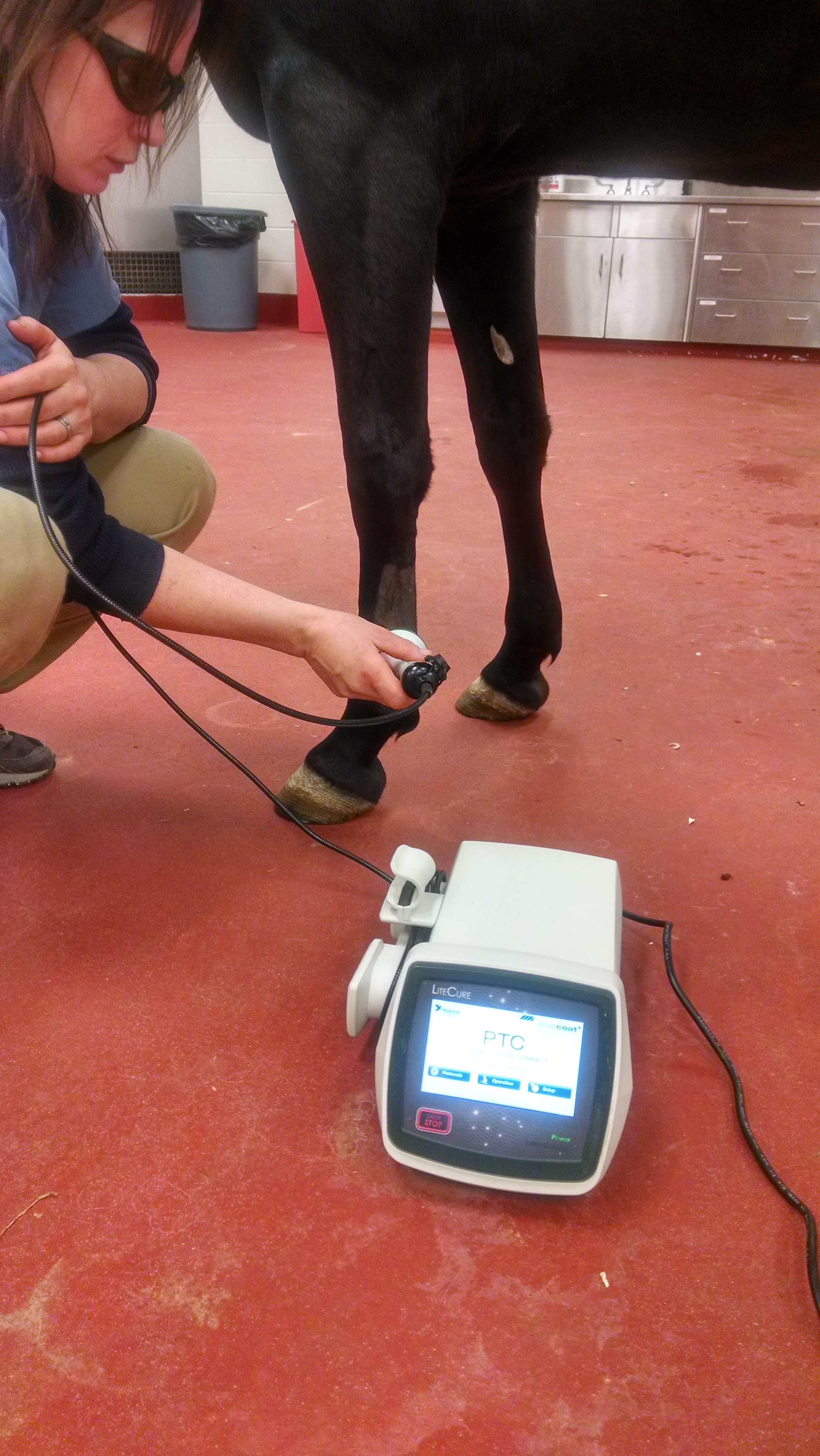Equine Therapy Programs: Transforming Lives One Ride at once
Just How Laser Treatment in Horse Treatment Is Revolutionizing Vet Take Care Of Equines
Laser treatment has actually become a transformative method in equine vet treatment, offering a non-invasive solution that expedites healing and boosts general health. Leveraging precise light wavelengths, this sophisticated treatment stimulates mobile regrowth, decreases inflammation, and minimizes pain. Its efficacy expands from bone and joint injuries to chronic disorders like osteoarthritis, considerably improving wheelchair and life top quality for equines. The mobility and versatility of laser treatment devices additionally underscore their growing necessity among vets. As we explore the detailed auto mechanics and real-world successes, the extensive effect on equine medical techniques becomes significantly apparent.
Understanding Laser Therapy

The innovation behind laser therapy is grounded in the principle of photochemistry, where photons are soaked up by chromophores within cells, bring about boosted ATP manufacturing and inflection of responsive oxygen types (Equine Therapy). This, consequently, advertises cellular proliferation, lowers swelling, and increases healing. Veterinary specialists utilize different types of lasers, including low-level lasers (LLLT) and high-power Course IV lasers, relying on the details healing purposes and the nature of the equine problem being dealt with
Various laser wavelengths and power settings are thoroughly selected to target various cells midsts and accomplish preferred scientific results. Safety protocols are paramount, as inappropriate use can bring about thermal damage or suboptimal healing impacts. Thus, a comprehensive understanding of laser treatment's devices and applications is vital for its efficient application in equine veterinary technique.
Benefits for Equine Wellness
The myriad advantages of laser treatment for equine health incorporate enhanced recovery, discomfort reduction, and boosted movement. This advanced therapy modality leverages details wavelengths of light to pass through cells, boosting cellular feature and advertising rapid cells repair. The non-invasive nature of laser therapy ensures minimal anxiety and pain for the horse, facilitating a smoother recovery process.
Improved recovery is one of the primary benefits, as laser treatment accelerates cellular regeneration and collagen synthesis. Pain decrease is accomplished with the anti-inflammatory effects of laser therapy, which reduces swelling and minimizes the manufacturing of pain-inducing chemicals.
Better mobility is another important benefit, especially for performance and working equines. By minimizing inflammation and pain, and enhancing cells repair work, laser therapy assists in bring back joint function and muscle versatility. The collective result of these benefits is not only a quicker return to normal activity however also a total improvement in the steed's top quality of life. Therefore, laser therapy stands as a transformative tool in modern-day equine veterinary treatment.
Usual Conditions Dealt With
Laser treatment has actually emerged as a versatile therapy choice for a variety of typical equine problems. Additionally, laser treatment is reliable for problems like osteoarthritis, where it helps reduce joint swelling and advertise tissue repair service.
Wound management is one more location where laser therapy has actually revealed significant guarantee. Persistent wounds or slow-healing abscess can be especially tough in horses, however laser therapy boosts cellular regeneration and improves blood flow, thus accelerating the recovery procedure. Additionally, laser therapies have been successfully employed in taking care of unguis conditions such as laminitis and abscesses, minimizing pain and promoting quicker recovery.

Innovation Behind Laser Treatment
Beyond the myriad conditions treatable with laser therapy, the modern technology itself qualities better assessment. At the heart you can try this out of laser treatment is the usage of particular wavelengths of light to pass through tissues and elicit organic feedbacks. These wavelengths, typically varying from 600 to 1000 nanometers, are uniquely taken in by chromophores in the skin, muscle, and other cells, initiating a cascade of mobile occasions.
Laser devices used in veterinary medication frequently make use of low-level laser treatment (LLLT) or cold laser treatment. Unlike high-powered medical lasers, these devices run at lower energy degrees, maximizing therapeutic benefits while reducing thermal damage. The power from the laser light promotes adenosine triphosphate (ATP) production, boosts mobile metabolic process, and accelerates cells repair service processes.

Success Stories and Study

Showcasing the tangible benefits of laser therapy, various success tales and instance researches illuminate its transformative influence on equine health and wellness. One such situation includes a pure-blooded racehorse suffering from persistent tendonitis. Typical therapies produced marginal renovation, yet after incorporating laser therapy into the regimen, the horse exhibited considerable reductions in swelling and pain within weeks, ultimately returning to competitive auto racing.
An additional engaging instance includes a dressage horse identified with severe pain in the back, restricting its efficiency. A veterinary group employed low-level laser treatment (LLLT) to target the irritated areas, causing significant renovation in versatility and a noteworthy decrease in pain. Over a number of sessions, the equine regained its peak kind, showcasing the efficacy of laser therapy in addressing bone and joint problems.
Additionally, a research carried out at a leading equine clinic checked out 50 horses with various soft cells injuries treated with laser treatment. The results were striking: 85% of the steeds showed accelerated healing times and boosted wheelchair. These cases underscore the convenience and efficiency of here are the findings laser treatment in equine medicine, supplying a non-invasive, scientifically-backed technique to enhancing healing and performance in equines.
Conclusion
Laser therapy is revolutionizing equine vet treatment by supplying a the original source non-invasive treatment that speeds up recovery, decreases swelling, and minimizes pain. With its efficiency in dealing with a variety of problems, from musculoskeletal injuries to chronic disorders like osteoarthritis, this innovation significantly improves equine wellness and movement. The mobility and flexibility of laser therapy additionally emphasize its transformative impact on veterinary methods, solidifying its role as an essential tool in modern-day equine medical care.